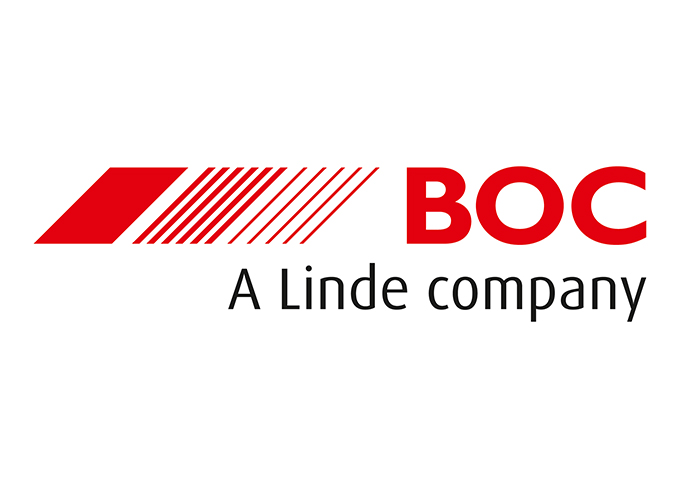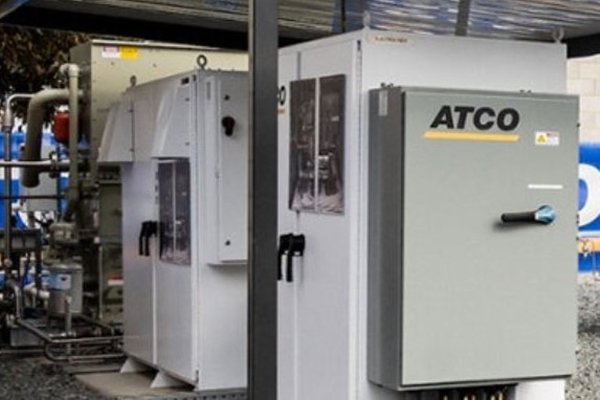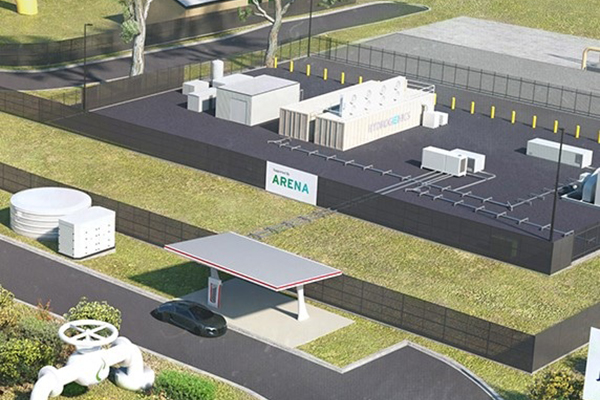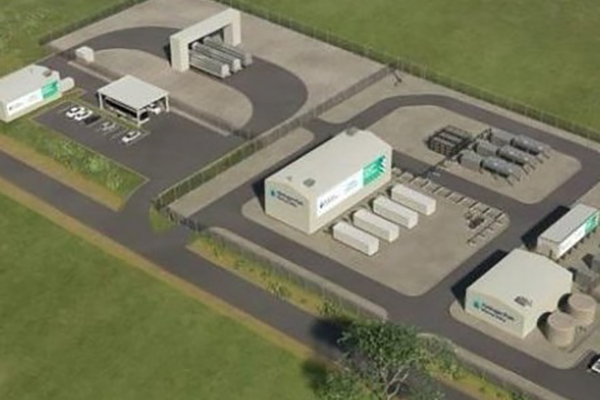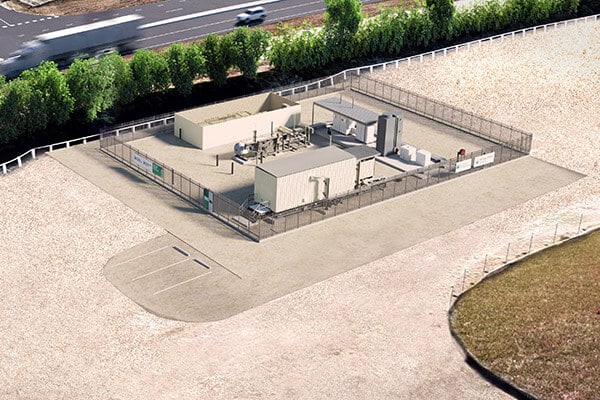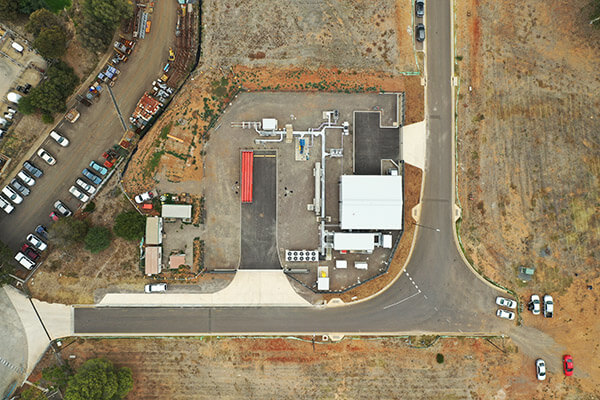
What is the Hydrogen Home?
Hydrogen Home (HyHome) is an Australian-first initiative showcasing 100% hydrogen gas appliances in a residential setting – demonstrating the way of the future for gas in the home.
HyHome is a joint initiative between AGN (part of Australian Gas Infrastructure Group) and leading residential home builder, Dennis Family Homes, with the support of our technology partners.
It is an exciting demonstration of the low carbon future of gas supply to our homes in Australia, which allows homeowners to enjoy the benefits of gas as they do today.
Hydrogen is a great replacement for natural gas because it can be used in the same way for heating, hot water and cooking appliances like your cooktop or barbeque.
Hydrogen
Did you know…
Hydrogen is colourless, odourless, non-toxic and an excellent carrier of energy.
Research indicates that net zero emissions from gas networks can be reached with hydrogen at half the cost of electrification.*
When burned, renewable hydrogen produces only heat and water vapour – no carbon emissions.
Australia is targeting net zero carbon emissions by no later than 2050.
Hydrogen can be used in the home in much the same way as natural gas.
Hydrogen is the simplest and most abundant molecule in the universe.
Our networks are largely hydrogen ready, with a blend of up to 5% renewable hydrogen in natural gas being used in around 4000 homes in South Australia.
Blended gas, comprising natural gas and renewable hydrogen, is already being used safety around the world in homes and businesses.
*Frontier Economics, 2020
Why hydrogen?
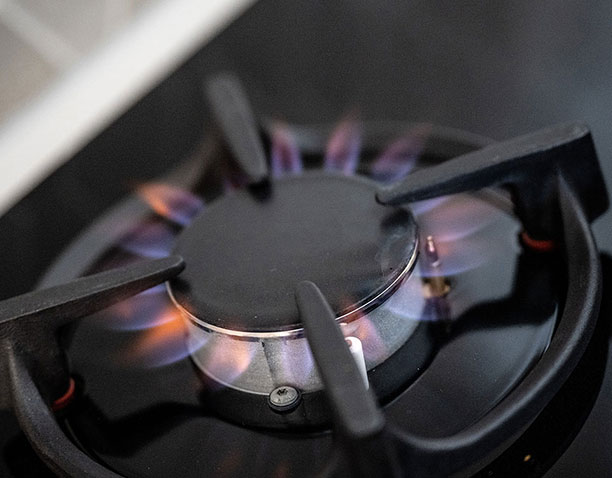
Hydrogen is naturally occurring but is usually found attached to other elements – for example with oxygen as water (H2O) or with carbon as natural gas (CH4). Therefore, if we want to use hydrogen, we must separate it from these other elements. There are a number of ways to produce hydrogen. AGIG’s preferred approach is to use electricity to split water into hydrogen and oxygen– a process known as electrolysis. When renewable electricity is used this produces green hydrogen. The kind we’re using in HyHome for demonstration purposes is grey (meaning it is created from natural gas), however the type we are currently and will continue to use to decarbonise the gas networks is renewable gas made from green hydrogen (created from renewable electricity) or biomethane. This requires production facilities to house the electrolysers which then delivers the renewable gas to households through the existing gas network.
Take a closer look at 100% hydrogen gas appliances
While existing home appliances will work safely, reliably and effectively with up to 10% hydrogen blends and potentially higher, appliance manufacturers are already working on hydrogen ready appliances that can easily transition from natural gas to hydrogen gas.
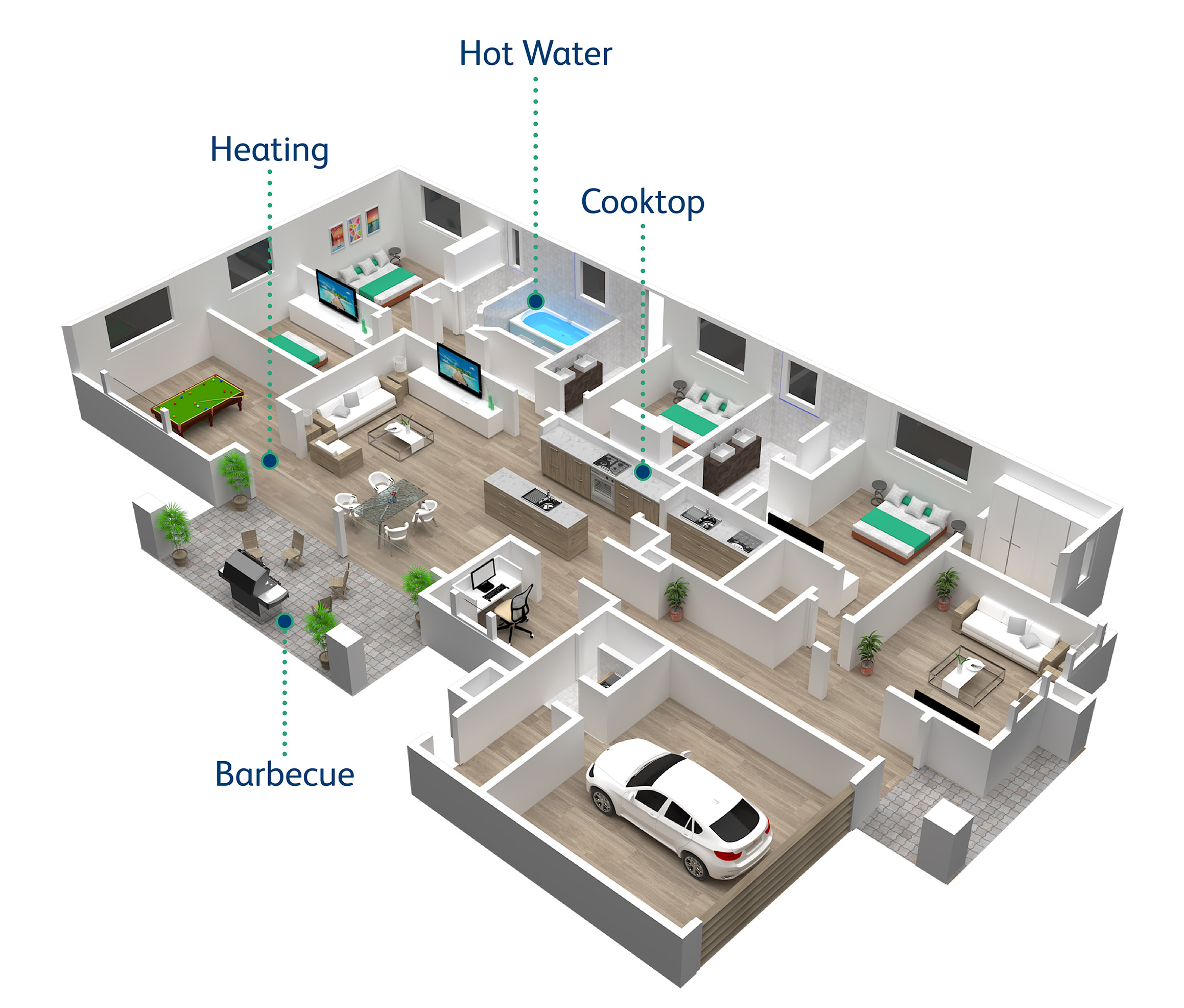
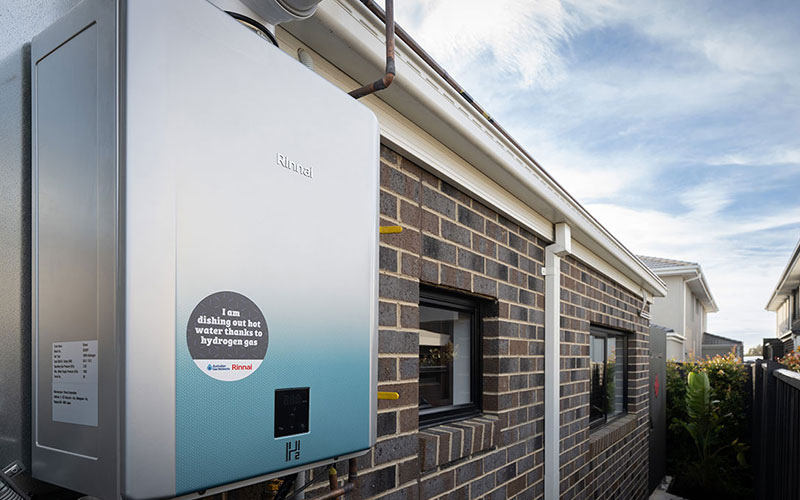
|
The unit has a gas input rating of 70MJ/h and a hot water capacity of 10 litres per minute at a 25 degrees celcius rise. As the uptake of this technology increases, the capacity of the system will be scaled up to match the 32 litres per minute flow rates of current products. Once the product transitions into mass production, the size of the unit will also be reduced. |
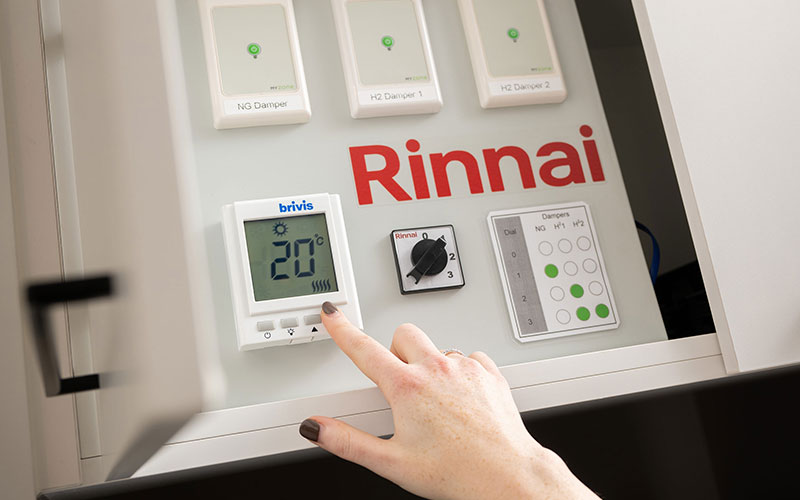
|
A hydrogen powered hot water service is powering a heat exchanger in the roof of HyHome. So the ducted heating in the home is running on hydrogen energy – paving the way for how we can warm your home but not the planet. |
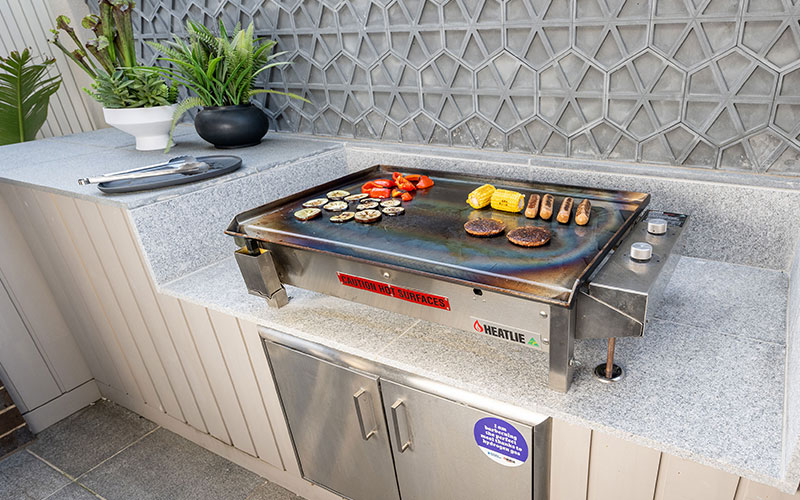
|
Developed in conjunction with Woodside Energy, the Heatlie Hydrogen BBQ works and cooks the same as any other BBQ, while using hydrogen as a fuel source as an alternative to LPG or natural gas. |
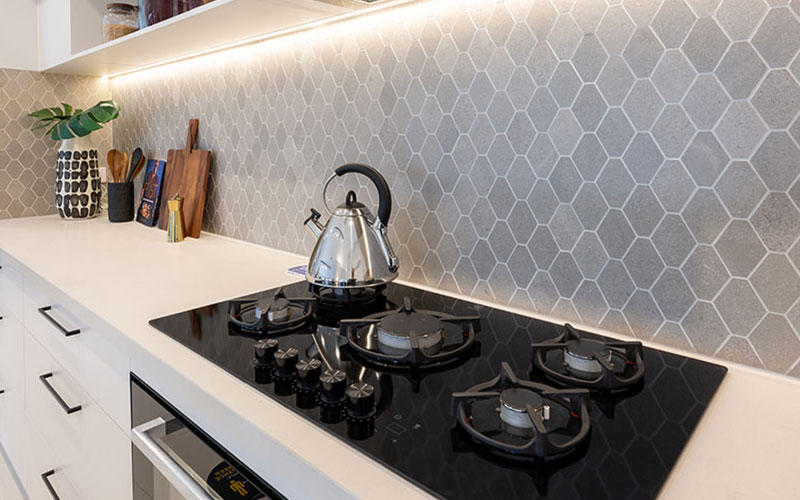
|
Our concept hydrogen gas cooktop offers unparalleled efficiency, delivering swift and precise heat. With a sleek and modern design that exudes elegance, it is the epitome of premium and, when run on renewable hydrogen, eco-conscious living. It offers a refined and responsible cooking option for the discerning home chef. |
Decarbonising the gas networks
By shifting from natural gas to renewable gas (such as green hydrogen), which can be used in the same way natural gas is today, we can deliver clean, reliable and renewable energy to power the appliances Australians use in their homes. For householders, this means no additional carbon emissions are released to the atmosphere simply by living as you already do each day!
Like electronic vehicles, homes featuring hydrogen-ready appliances are expected to become the norm as we move toward our goal of reducing carbon emissions.
Green hydrogen in particular is considered a fuel of the future as it has a low impact on the environment and can be stored in large volumes within the current gas network for when its required – just like a battery.
Serving nearly 1.3 million homes and businesses in South Australia, Victoria, Queensland, New South Wales and the Northern Territory, AGN is proudly leading the Australian energy sector with our renewable gas projects to deliver renewable hydrogen through our existing distribution networks.
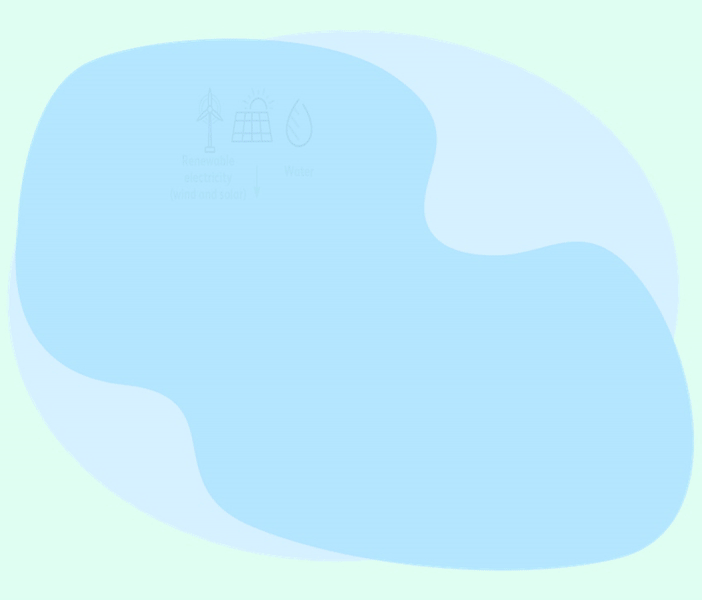
Our renewable gas targets
AGN is part of the Australian Gas Infrastructure Group (AGIG), which owns and operates gas transmission and distribution pipelines across Australia.
The AGN gas distribution networks deliver gas to over 1.3 million customers in South Australia, Victoria, Queensland, New South Wales and the Northern Territory. We own approximately 25,000 kilometres of natural gas distribution networks and 1,100 kilometres of natural gas pipelines and are one of Australia's largest natural gas distribution companies, transporting natural gas from the high pressure transmission pipelines to your street and home.
With a target of net zero carbon emissions by 2050, Australia is on the path to reducing energy emissions and creating a cleaner future.
Already in South Australia, 3000 homes receive an up to 5% renewable gas blend through the existing gas network. Similar projects delivering up to 10% renewable gas blends are planned for 700 homes in Queensland and 40,000 households in Victoria. Ultimately AGN aims to supply 10% renewable gas across its networks by 2030 and 100% renewable gas by 2040 (as a stretch target) but no later than 2050.
By shifting from natural gas to renewable gas (such as green hydrogen) which can be used in the same way natural gas is today, we can deliver clean, reliable and renewable energy to power the appliances Australians use in their homes. For householders, this means no additional carbon emissions are released to the atmosphere simply by living as you already do every day!
Our HyHome Partners
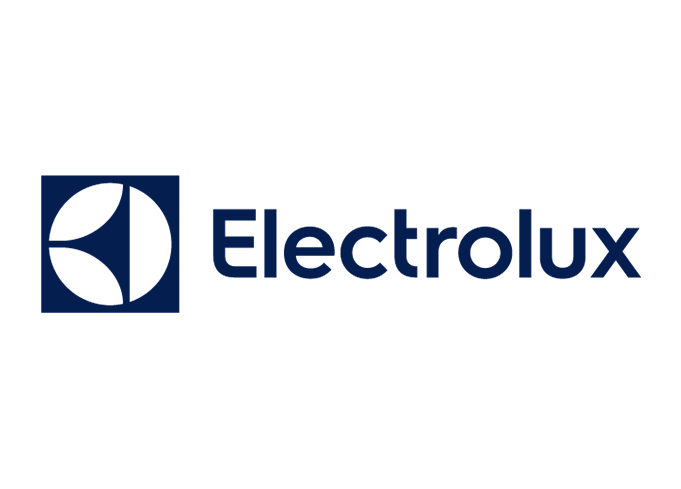
Electrolux
As a leading global appliance company, Electrolux is innovating sustainable appliances for the home.
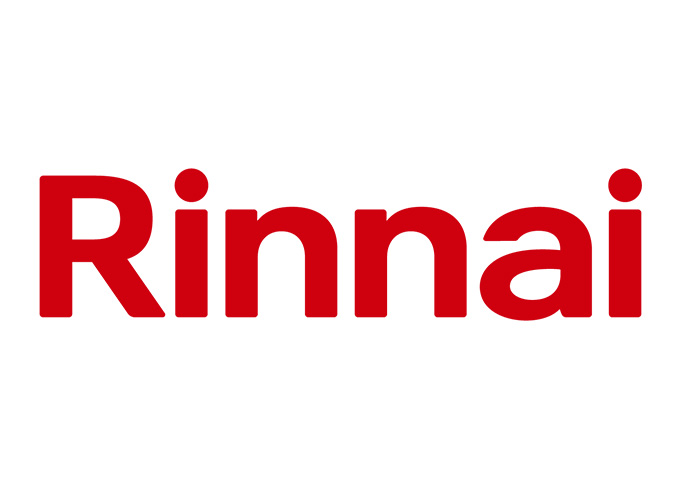
Rinnai
Learn how appliance manufacturer Rinnai is harnessing clean energy using revolutionary technology.
Renewable gas projects in Australia
Australia is on the path to reducing energy emissions and creating a cleaner future. For gas, this means shifting away from natural gas toward renewables. With renewable gas (such as hydrogen and biomethane) the gas network will deliver clean, reliable and renewable energy from the appliances Australians use every day.
Here's what's happening around Australia right now.
FAQ
- What is HyHome?
-
Hydrogen Home (HyHome) is an Australian-first initiative showcasing 100% hydrogen gas appliances in a residential setting – demonstrating the way of the future for gas in the home.
- Why was HyHome developed?
-
The aim of the HyHome is to demonstrate what’s achievable, and we’re excited about the possibilities of hydrogen.
We’re decarbonising for our customers. As owners and operators of the gas network, it’s our role to safely transport energy to customers – we’re now looking to make that energy renewable in response to what our customers are asking for.
A decarbonised gas supply is best for everyone, and complements the role of renewable electricity and other renewable energy forms in meeting our decarbonisation targets.
- What is hydrogen?
-
Hydrogen gas is a form of energy that is used around the world today, predominantly within industry. It can also be used for heating, cooking, and powering appliances, much like natural gas. It can be produced using a number of methods, including the electrolysis of water, where electricity is used to split water into hydrogen and oxygen.
- Can existing houses take 100% hydrogen?
-
Over time we have upgraded the majority of our networks to hydrogen-compatible materials – so the networks that pass millions of existing homes are ready to take hydrogen today.
Existing homes with gas connections are already compatible with hydrogen gas. The fittings and infrastructure are all exactly the same. Current plumbing standards are also compatible with hydrogen and falls within the existing skillset of those in industry. The only thing that need to be updated are the current generation appliances to hydrogen ready ones.
- Is HyHome green?
-
Because green hydrogen is not yet widely available, for demonstration purposes we have used ‘grey’ hydrogen, which is made by natural gas.
However, the appliances run the same regardless of the method used to make the hydrogen, and would operate just the same as if they were powered by hydrogen made from renewable sources which is the type of hydrogen we are planning to use to decarbonise the gas in our networks.
- Is a hydrogen home more or less safe than a natural gas one?
-
At AGN, safety underpins everything we do, therefore we must be satisfied that our projects are safe before we open them to the public. HyHome has the same level of safety as you would expect in a regular home. To ensure that our safety standards are met, we have odourised our hydrogen and all aspects of HyHome have been inspected and approved by the technical regulator.
- How well do the hydrogen appliances operate?
-
The appliances installed in HyHome look and operate just the same as you would find in your home today. HyHome proves that you can cook your food and heat your home in the same way that you do with natural gas.
